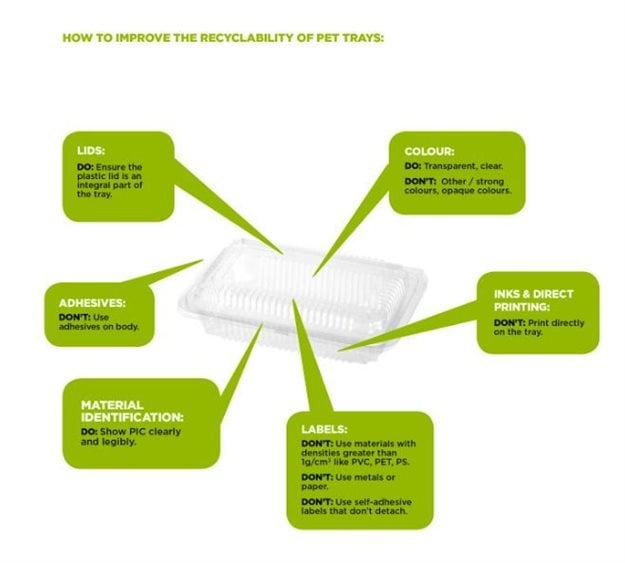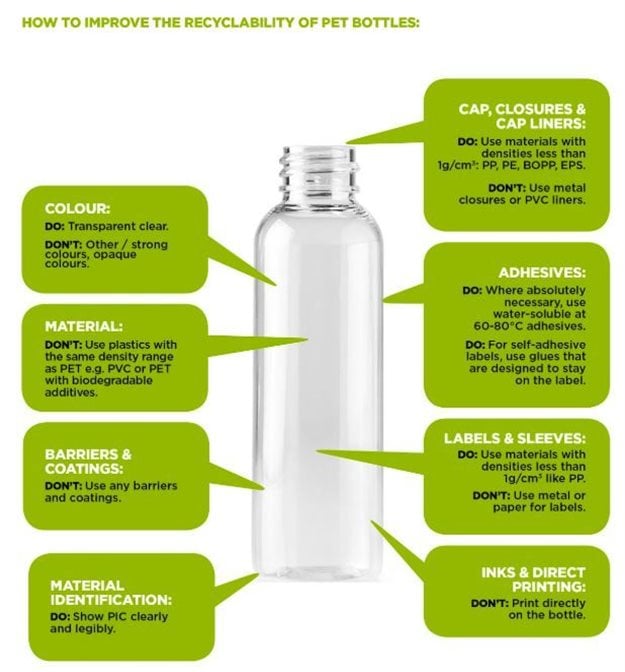
According to PETCO chief executive officer Cheri Scholtz, it is essential that retailers, brand owners, packaging manufacturers and designers embed recyclability responsibilities into the design process so that PET plastic packaging can be successfully recycled and re-used in new products.
“Now, more than ever, companies failing to address consumer demand for environmental performance in product design and development will find it increasingly difficult to compete in the local and global market,” said Scholtz, adding that the Waste Act also made Extended Producer Responsibility a legal requirement.
Designing for ecosystems – keeping plastic out of the environment – must be at the heart of rethinking how organisations approach the circular economy and supply chain, Scholtz said.
Going forward, she said, a key focus would be on minimising plastic waste through design for recycling, whether it involved using more recycled content (rPET) or improving the recyclability of PET plastic bottles, which make up 70% of the PET market, as well as trays and punnets and other packaging. Currently, all plastic trays, tubs and punnets – regardless of their plastic make-up – are not collected for recycling.
“PET plastic remains a lightweight, cost-effective, fit-for-purpose material. But we must understand and utilise the value of its post-consumer waste as the economic resource it is in building a sustainable circular economy.
“It’s about approaching sustainability not as an add-on or something to retrofit, but as a service integral to your product.”
She said the three key phases of a circular value chain were the inclusion of more materials from sustainable sources, smarter design that eliminated problematic or unnecessary packaging, and closing the loop to ensure that packaging could be recycled once the product had been consumed.

According to the Designing for the Environment guidelines, these are some of the key considerations:
Packaging designs should be compatible with the recycling technologies, collection and recycling infrastructure, and end-use markets prevalent in South Africa. PET in particular is 100% recyclable if certain basic design principles are followed.
“Plastic packaging companies, manufacturers of packaging and brand owners are asked to review their current portfolio of PET packaging against PETCO’s design guidelines, highlight any aspects where designs could potentially be improved and implement the changes as soon as the opportunity presents itself,” said Scholtz.
“Ultimately, the guiding principle for any PET packaging design should be ‘fit for purpose’. The goal of improving recyclability of PET packaging cannot compromise product safety or interfere with product functionality. Packs must be strong enough to protect the contents as best as possible throughout the supply chain.”
Key guidelines
“When designing a product, considering what happens after its demise will soon become as important as its performance,” said Scholtz.
“Good environmental practice requires us to use the least material to do the job required, then to reuse or recycle by recovering material or energy from products at the end of their life.”

Scholtz said businesses needed to recognise the recyclability of PET as the business opportunity and sustainable asset it is, as opposed to an onerous environmental obligation.
“PET bottles in particular are made from one of the few polymers that can be recycled into the same form again and again.”
In addition, she said, rPET could be used to make new products such as the polyester staple fibre used for clothing, home textiles such as pillows and carpeting, automotive boot linings and seat covers, industrial roof insulation and strapping materials.
Last year alone, R1.2bn was injected into South Africa’s downstream economy from the designing, manufacturing and distribution of products made from rPET.
“From PETCO’s perspective, the production and use of both food-grade and non-food-grade rPET resin remains the major growth opportunity for PET recycling in South Africa.”
Download the Designing for the Environment guidelines here.